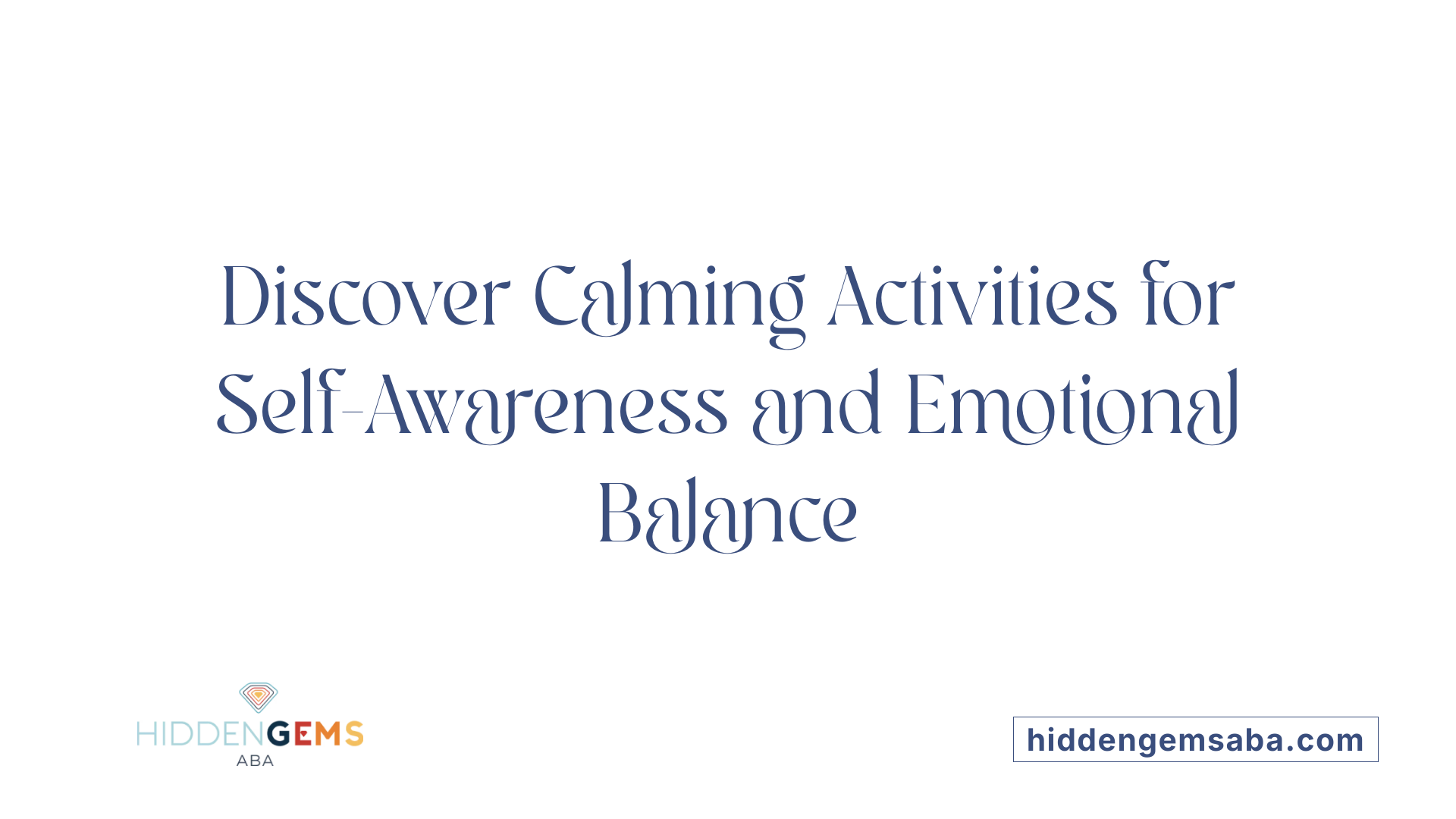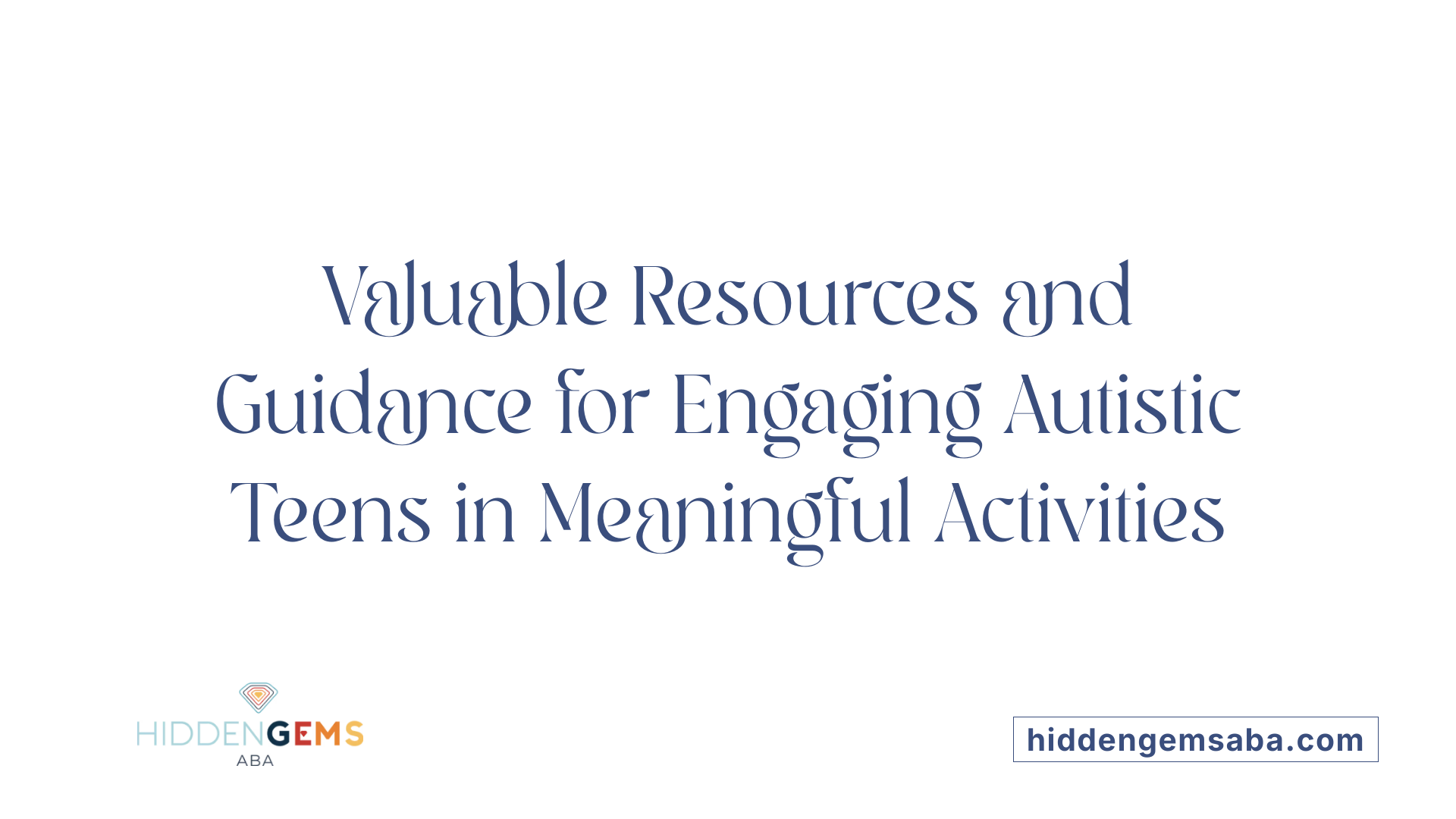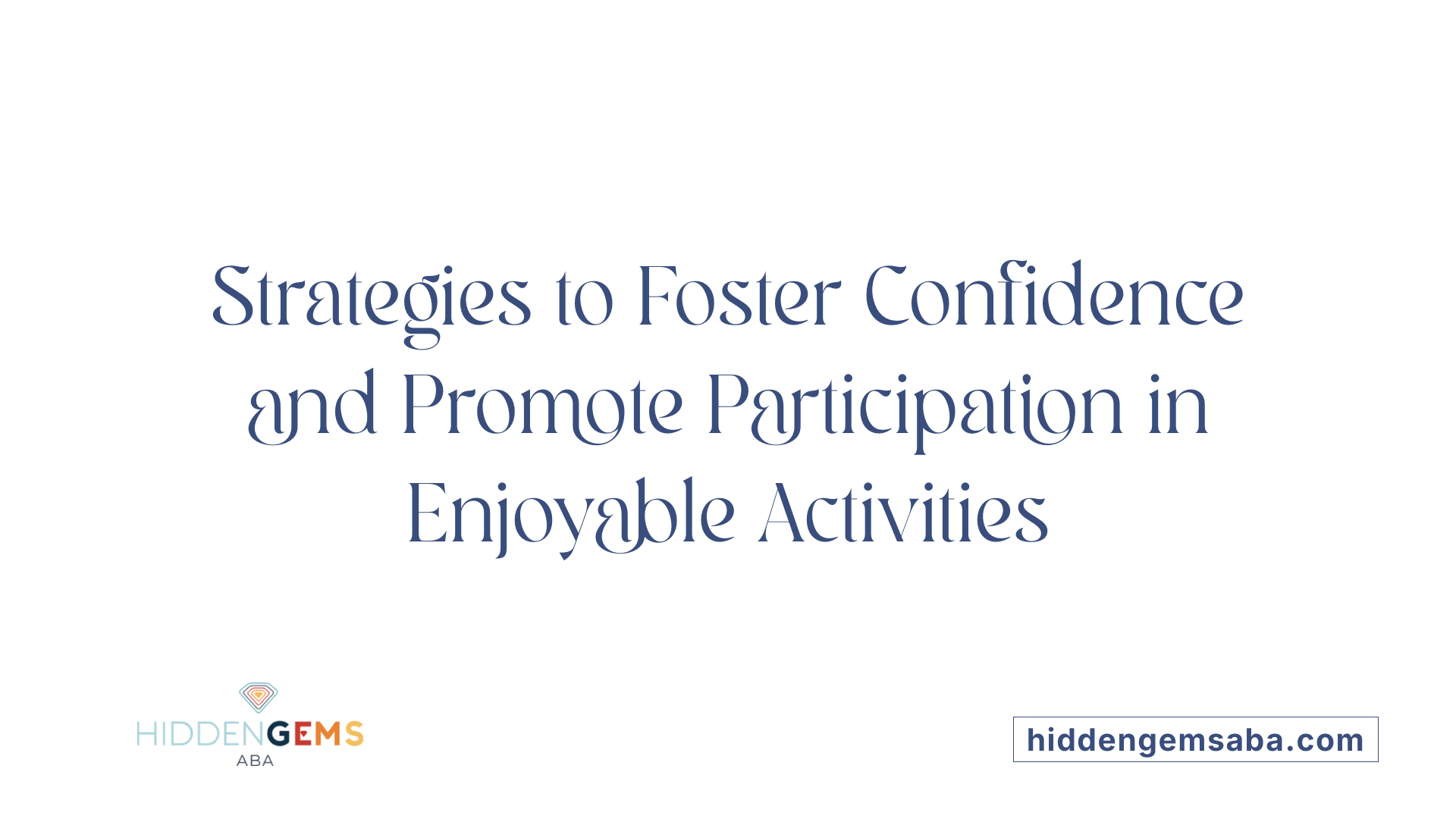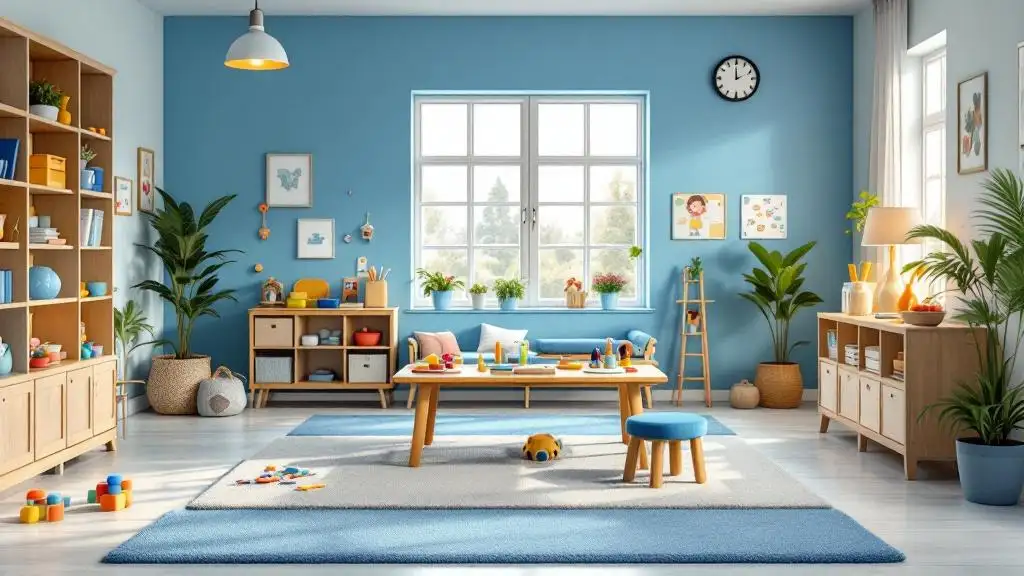Unlocking Potential Through Thoughtful Recreation
Providing a diverse array of activities for autistic teenagers can significantly enhance their social skills, emotional well-being, and overall development. Tailored activities that respect sensory sensitivities, foster creativity, and promote social interaction are vital in supporting these young individuals to thrive. This guide explores various activities, strategies, and resources designed to meet the unique needs of autistic teens, ensuring they have access to enriching experiences that encourage growth, confidence, and self-understanding.
Creative Arts as a Pathway to Self-Expression and Emotional Regulation
Creative arts provide a powerful outlet for autistic teenagers to explore and express their emotions, interests, and personalities. Activities like drawing, painting, and craft projects enable them to communicate feelings visually and tactilely, fostering emotional regulation and self-awareness. For example, using textured materials or creating colorful artwork can soothe sensory sensitivities and reduce anxiety.
Painting and drawing not only improve fine motor skills but also serve as methods of self-expression and emotional processing. Artistic endeavors like digital arts and animation allow teens to develop technical skills while exploring their inner worlds.
Storytelling, whether through oral narration, writing, or digital media, encourages imagination, spontaneity, and language development. Engaging in storytelling activities promotes communication skills, empathy, and social understanding, especially when done collaboratively.
Music therapy and participating in musical activities such as instrument playing, singing, or dance foster confidence, language skills, and emotional regulation. These activities can be calming and help manage mood swings, while also enhancing social interaction during group performances.
Sensory-friendly creative activities like making slime, working with clay, or engaging in textile crafts offer sensory stimulation while supporting fine motor coordination and concentration. These activities create a safe space for exploration and help manage sensory sensitivities.
Incorporating interests into creative projects—such as themed art or personalized digital content—boosts engagement and self-esteem. Group projects and social art activities encourage teamwork, communication, and empathy, strengthening social bonds.
Overall, integrating diverse artistic pursuits into routines provides multifaceted benefits, including emotional expression, social connection, skill development, and increased confidence among autistic teenagers.
| Activity Type | Benefits | Additional Notes |
|---|---|---|
| Drawing/Painting | Emotional expression, fine motor skills | Supports self-awareness and stress relief |
| Craft Activities | Sensory stimulation, coordination | Includes clay modeling, textile arts |
| Music Therapy | Language, confidence, mood regulation | Instruments, singing, dancing |
| Storytelling | Language, social skills, imagination | Oral, written, digital forms |
| Digital Arts | Technical skills, creativity | Animation, digital design |
| Sensory Play | Calmness, sensory regulation | Slime, textured toys, sensory bins |
| Group Creative Projects | Social skills, teamwork | Collaborative murals, performances |
These engaging arts activities create meaningful avenues for growth, allowing autistic teens to develop essential emotional, social, and cognitive skills while nurturing their individual talents.
Music, Movement, and Performing Arts to Boost Confidence and Interaction
How can creative activities support emotional, social, and skill development in autistic teenagers?
Engaging in creative pursuits like music, dance, drama, and sensory play offers autistic teenagers valuable opportunities for growth. These activities help them express their emotions and interests, fostering better emotional regulation and self-awareness. For example, playing instruments or participating in group singing promotes self-confidence and encourages social interaction.
Dance activities and movement-based exercises help improve coordination, body awareness, and physical confidence. Drama and role-playing activities simulate real-life social scenarios, enhancing communication skills and empathy.
Music therapy tools specifically designed for autism, such as adapted instruments and rhythmic exercises, support language development and sensory processing. Incorporating these activities with personalized interests can boost engagement, autonomy, and overall well-being.
Group projects in arts and performing arts foster teamwork and social skills, creating a sense of community and belonging. Sensory-friendly environments, mindfulness, and safe spaces help manage sensory sensitivities and reduce anxiety, allowing teens to relax and develop confidence.
Creative activities—whether through visual arts, performing arts, or sensory exploration—are essential for holistic development. They help autistic adolescents build emotional resilience, social connections, and practical skills in enjoyable and meaningful ways.
Physical and Sensory Activities for Balance and Calmness

What activities can help autistic teenagers understand themselves and manage their energy levels?
Autistic teenagers can benefit greatly from activities tailored to promote self-awareness and energy regulation. Utilizing resources like guides, worksheets, and videos created by autistic individuals provides valuable insights into their own experiences and helps develop a better understanding of their needs.
Physical activities are effective ways to manage emotional energy. Activities such as bouncing on a trampoline, running, dancing, swimming, or playing musical instruments help release excess energy, improve mood, and foster physical coordination.
Creative pursuits also play a vital role. Sensory art projects, cooking, gardening, and drama offer opportunities for self-expression and emotional regulation. These activities not only soothe but also facilitate social interaction and confidence building.
Mindfulness techniques, including meditation and yoga, are excellent calming strategies. Using cue-controlled relaxation tools can help teens develop skills to calm their minds and bodies, improving focus and reducing anxiety.
Establishing routines, engaging in outdoor exploration, and exploring special interests create an environment of predictability. These help increase confidence, foster social connection, and promote self-understanding.
In summary, combining physical movement, creative expression, mindfulness, and outdoor activities enables autistic teens to better understand themselves, manage their energy effectively, and develop skills for emotional regulation and social participation.
Structured Social Skills Development Programs
What strategies can improve social skills in autistic teenagers?
Enhancing social skills in autistic teenagers involves a combination of evidence-based programs and supportive activities. The PEERS program is a well-established approach that provides structured lessons in conversational skills, friendship development, and navigating social situations. It uses role-playing, behavioral rehearsal, and actively involves parents as social coaches, helping teens practice skills in real-life contexts.
Another effective method is the SDARI approach, which focuses on improvisation games, positive reinforcement, and performance-based exercises. This method emphasizes building confidence and spontaneous social interaction through engaging activities.
Peer mentoring also plays a significant role. Connecting teens with typically developing peers encourages natural social exchanges, reduces social anxiety, and helps generalize skills learned in therapy to everyday life.
Supporting these programs are visual supports and social narratives. Visual cues, such as pictures and diagrams, clarify social expectations and cues, while social stories help teens understand specific social scenarios and appropriate responses. Teaching emotions, empathy, and social cues explicitly ensures that teens recognize and respect social differences.
Personalizing interventions is critical. Tailoring activities to each teen's interests and strengths increases motivation. Starting with basic skills and gradually integrating them into real-world settings ensures steady progress.
In summary, combining structured programs like PEERS and SDARI with peer support, visual aids, and individual-focused strategies creates a comprehensive framework to improve social competence among autistic teens.
Resources and Guidance for Engaging Autistic Teens in Activities
 Finding effective ways to involve autistic teenagers in meaningful activities can greatly support their social, emotional, and cognitive development. One valuable resource is the 'Know Yourself' series, which offers free materials such as videos, PDFs, and worksheets. These resources are created by autistic individuals and cover topics like understanding oneself, exploring identity, setting goals, and improving self-awareness. They empower teens to better grasp their experiences and develop independence.
Finding effective ways to involve autistic teenagers in meaningful activities can greatly support their social, emotional, and cognitive development. One valuable resource is the 'Know Yourself' series, which offers free materials such as videos, PDFs, and worksheets. These resources are created by autistic individuals and cover topics like understanding oneself, exploring identity, setting goals, and improving self-awareness. They empower teens to better grasp their experiences and develop independence.
For diverse and engaging activities, the autism community and organizations like Autism Speaks provide extensive lists of virtual options. These include interactive educational games, arts and crafts projects, outdoor exploration, virtual museum visits, and online music classes—all tailored to suit a range of sensory and cognitive needs.
Structured social groups are also highly beneficial. Led by trained professionals, these groups foster social skills, communication, and peer interactions in supportive environments. They often incorporate role-playing and guided activities to help teens practice everyday social scenarios.
Additionally, using visual aids like schedules, emotion cards, and routine charts can make activities more accessible. Routines provide predictability, reducing anxiety and helping teens feel comfortable participating. Sensory tools such as fidget toys, calming textured objects, and designated quiet spaces further support regulation during activities.
By combining these resources—informational guides, virtual programs, structured social groups, and visual supports—parents and caregivers can create engaging, tailored opportunities that encourage growth and confidence in autistic teenagers.
The Know Yourself Series: Developing Self-Awareness and Management Skills
 What activities can help autistic teenagers understand themselves and manage their energy levels?
What activities can help autistic teenagers understand themselves and manage their energy levels?
Autistic teenagers benefit from activities that encourage self-awareness and help regulate their energy. The 'Know Yourself' series offers free, accessible resources like guides, worksheets, and videos created by autistic individuals. These tools support teens in exploring their personal experiences, understanding their autism, and developing independence.
Physical activities are particularly effective. Bouncing on a trampoline, running, dancing, swimming, or playing musical instruments allows for the release of excess energy, helping manage emotional states. Creative pursuits such as sensory art projects, cooking, gardening, and drama foster emotional expression and social bonding.
Mindfulness practices—including meditation, yoga, and cue-controlled relaxation—not only promote calmness but also improve attention and emotional regulation. Establishing routines, recognizing special interests, and engaging in outdoor or social activities provide structure and predictability. These approaches foster confidence, enhance self-understanding, and aid energy management.
Overall, combining physical, creative, and mindfulness strategies within an environment of support and routine helps autistic teens better understand themselves and develop sustainable ways to balance their energy, leading to improved well-being and independence.
Encouraging Participation and Building Confidence in Activities
 Creating a supportive environment is the foundation for encouraging autistic teenagers to engage in various activities. This environment should be sensory-friendly and tailored to each individual's interests and sensitivities, ensuring they feel safe and understood.
Creating a supportive environment is the foundation for encouraging autistic teenagers to engage in various activities. This environment should be sensory-friendly and tailored to each individual's interests and sensitivities, ensuring they feel safe and understood.
Personalized approaches are crucial. Using visual aids, establishing routines, and incorporating sensory tools help teens navigate activities comfortably. For example, integrating their passions—such as music, art, or technology—can boost motivation and confidence.
Engaging and creative activities naturally foster self-expression and social skills. Art projects, storytelling, playing instruments, or participating in virtual museum visits provide meaningful ways for teens to explore interests while developing communication and social interaction.
Parental involvement plays a significant role. By supporting and encouraging participation, parents can help reinforce positive experiences and provide stability. They can also collaborate with professionals to adapt activities to suit individual needs.
Respecting each teen's individual preferences is essential. Offering a diverse range of activities—from sports and outdoor adventures to digital creativity and puzzle-solving—ensures that every teen finds something enjoyable and meaningful. This variety cultivates confidence, promotes skill development, and nurtures social connections.
In summary, fostering engagement among autistic teens involves a combination of a nurturing environment, personalized and creative activities, active parental support, and respecting their unique interests. These strategies help build their confidence and ensure participation becomes a positive and rewarding experience.
Supporting Growth Through Thoughtful Engagement
Encouraging autistic teenagers to participate in a wide range of tailored activities can greatly improve their developmental skills, emotional health, and social confidence. By utilizing creative arts, physical activities, structured social skills training, and supportive resources, parents and caregivers can help teens explore their interests, understand themselves better, and connect meaningfully with others. The combination of innovative strategies and compassionate understanding creates an environment where autistic teens can thrive, feel valued, and develop essential life skills. Continual encouragement, personalized approaches, and accessible resources are key to unlocking each young person's full potential on their unique journey of growth.
References
- 13 Activities For Teenagers With Autism
- Resources for autistic teenagers
- 24 Classroom Activities for Kids with Autism
- 8 Fun Hobbies And Activities For Teens With Autism
- Virtual interactive autism activities
- Fun and Creative Activities for Autistic Teenagers
- Promoting social skills for autistic teens






